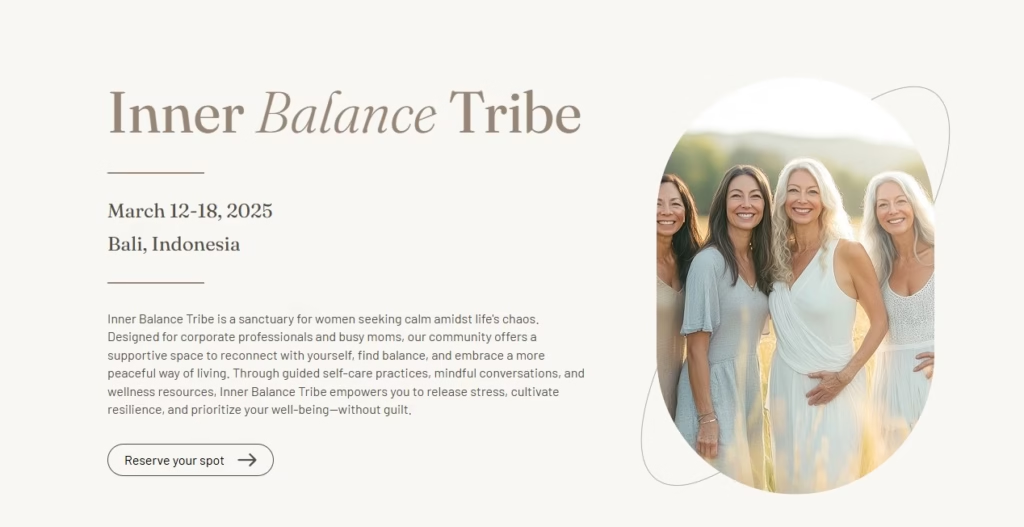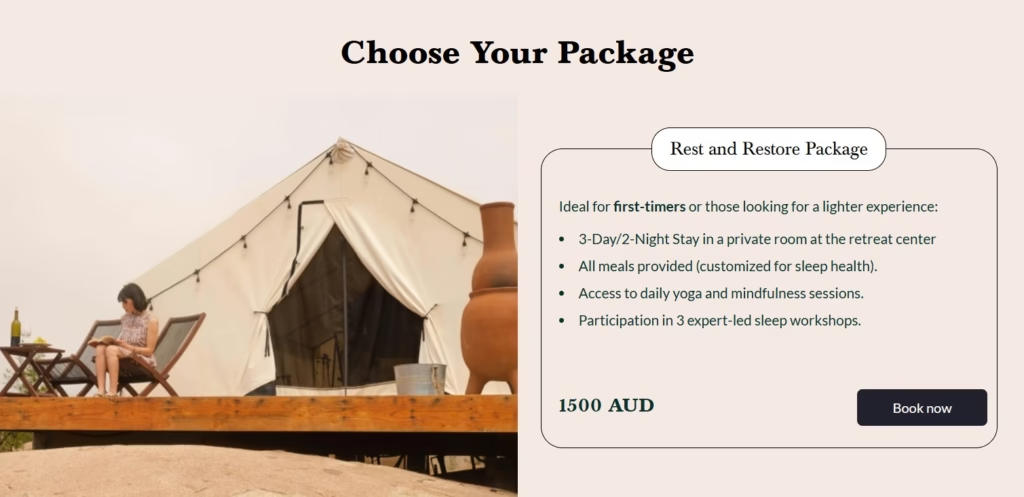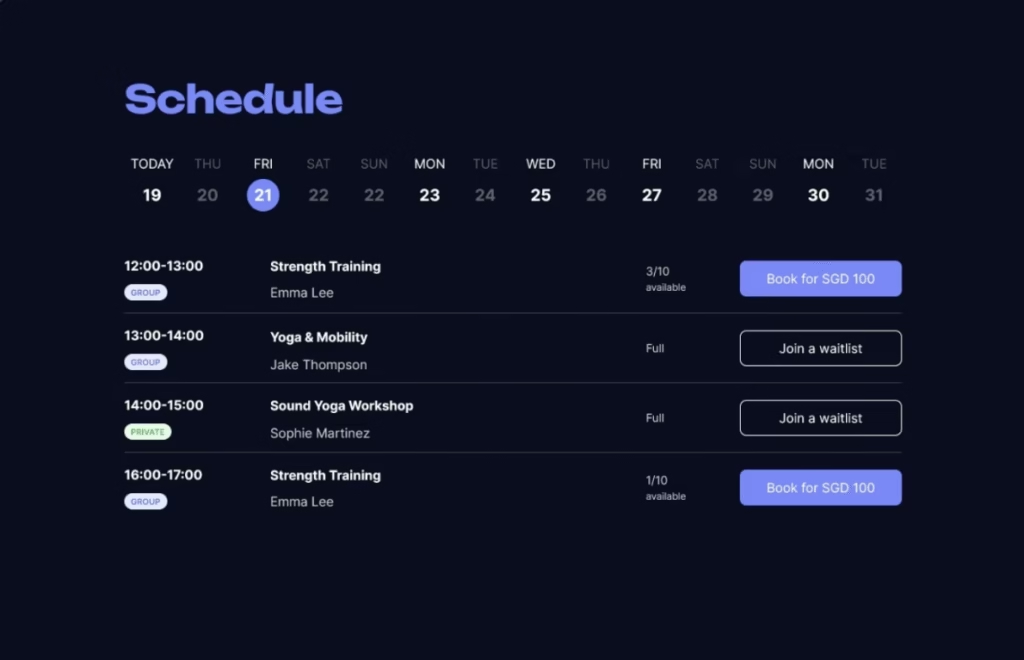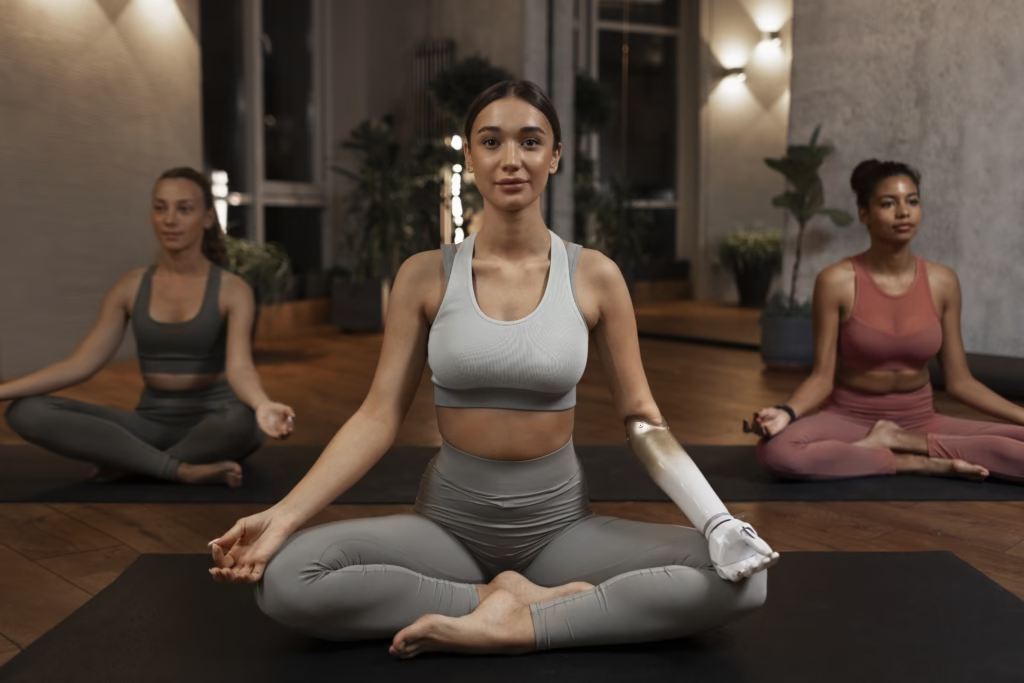Feeling invisible in a sea of yoga teachers?
You’ve spent hours refining your cueing, planning beautiful sequences, and probably taught more free classes than you’d like to admit. Yet somehow, your calendar still has too many blank spaces and not enough bookings.
Sound familiar?
You’re not lacking in talent, you’re lacking in visibility. The truth? Students aren’t Googling “amazing yoga teacher who’s kind and passionate.” They’re searching class times, browsing Instagram, and tapping on websites that load fast and let them book instantly. Without a compelling yoga teacher website, you risk getting overlooked, no matter how gifted you are.
Here is our no-fluff, deeply practical Yoga Teacher Website Marketing Guide, made for modern instructors who want to go from empty mats to a full, thriving practice.
Let’s begin.
Why Your Website Is More Than Just a Digital Business Card

Your website isn’t just “where you send people” — it’s where people discover, trust, and book you.
In fact, 76% of people check out a business’s website before engaging with their services — and that includes your classes.
A yoga teacher website that’s outdated, confusing, or built for something generic (like a bakery or lawyer template) doesn’t convert curious visitors into paying students.
That’s where TheFlowOps becomes a total game-changer. It’s designed specifically for wellness professionals including yoga teachers, retreat hosts, and studio owners. It helps you not just launch a site, but build a business that books while you flow.
🔗 Already convinced? Start for free with TheFlowOps here.
Need help building your site from scratch? Here’s how to build your yoga website step-by-step.
What Makes a Yoga Website That Fills Classes (Not Just Looks Good)
Let’s be honest: most yoga websites look the same. But not all of them work the same.
A truly effective website needs:
- A clear, bookable class schedule — ideally synced with an integrated scheduler like TheFlowOps’ scheduler.
- Easy checkout — Stripe + bank transfer, no awkward back-and-forths.
- Responsive design — because most of your traffic is coming from mobile.
- Retreat, class, and membership package options — like custom 3-class packs or vacation retreats.
- A compelling story — your About page should feel like a conversation, not a resume.
- Testimonials — even one quote from a happy student can build trust.
You can absolutely build this with tools like Wix, Mailchimp, or ConvertKit — but you’ll be stitching together 4+ platforms. TheFlowOps simplifies this with one login and wellness-specific templates.
Explore beautifully pre-designed yoga templates at the Templates Marketplace.
Want to launch your yoga website this weekend? Browse templates made just for yoga teachers
Showcase: Templates Made for Yoga Teachers and Studios
When you’re a yoga teacher or studio owner, your website is more than a business card, it’s the first taste of your class experience. TheFlowOps offers wellness-focused, mobile-friendly templates designed for teachers, retreat leaders, and wellness entrepreneurs. Each comes with integrated booking, payment processing, and space to tell your story.
Here are three standouts from the Templates Marketplace designed to inspire your own online presence:
1. Womanhood & Inner Balance

Best For:
- Wellness entrepreneurs offering women’s circles, self-care retreats, inner healing workshops, or yoga for women’s health.
Key Features & Benefits:
- Inviting Atmosphere: Soft textures, flowing transitions, and warm, earthy palettes that immediately create a sense of safety and trust.
- Integrated Scheduling: Seamlessly manage workshop sign-ups, private coaching bookings, and membership programs without extra tools.
- Storytelling Sections: Dedicated space to share your mission, values, and community offerings — perfect for connection-based marketing.
- Responsive Design: Looks beautiful on mobile, tablet, or desktop, so students can book no matter where they are.
- Effortless Booking Flow: Automated confirmations reduce admin work while giving clients instant peace of mind.
💡 Imagine hosting a monthly women’s retreat where guests can browse your offerings, select a package, and confirm their spot in less than two minutes.
2. Deep Rest Reset

Best For:
- Teachers and retreat hosts offering meditation immersions, yoga nidra workshops, burnout recovery retreats, or sleep therapy experiences.
Key Features & Benefits:
- Minimalist Aesthetics: Clean lines, calm palettes, and intentional white space that create a tranquil browsing experience.
- Built-in Scheduling & Payments: Organize retreat dates, manage bookings, and process payments in one place — no tech juggling.
- Personalized Itineraries: Present day-by-day retreat plans to help guests visualize their transformative experience before booking.
- Optimized Navigation: Smooth, intuitive site structure so visitors can find what they need without distraction.
- Automated Reminders: Keep guests engaged and informed from booking to arrival.
💡 Perfect for teachers who want their website to feel like the first step of a restorative journey.
3. Glamping Getaway

Best For:
- Retreat leaders offering luxury glamping experiences, outdoor yoga weekends, adventure wellness getaways, or nature-based workshops.
Key Features & Benefits:
- Full-Screen Imagery: Showcase your stunning location — from forest canopies to beach sunsets — with immersive photography.
- Seamless Booking System: Guests can reserve spots, choose packages, and pay without leaving your site.
- Story-Driven Layout: Highlight the essence of your retreat with storytelling sections and curated image galleries.
- Automated Guest Management: From confirmations to participant lists, all managed within TheFlowOps.
- Mobile-Optimized: Works perfectly for travelers booking from their phone.
💡 Turn your site into a digital invitation that makes guests feel the campfire glow before they even arrive.
Explore More: These are just three of the many wellness-focused designs in our Templates Marketplace. Find the one that feels like home for your brand, customize it in minutes, and start accepting bookings today.
Want more inspiration for your online presence? See more strategies, guides, and examples in our Yoga Teachers category here.
Designed for Yoga Teachers: Why TheFlowOps Is Different
Let’s talk product, without making this feel like a pitch.
TheFlowOps was designed to solve your exact pain points as a yoga teacher:
- You want to teach, not tinker with tech.
- You want to offer flexible pricing (class packs, workshops, retreats).
- You want to be bookable without managing WhatsApp DMs at 11pm.
What you get with TheFlowOps:
- Fully responsive site that works out-of-the-box
- Yoga-specific templates (not repurposed corporate themes)
- Custom pricing options: 3-class packs, workshops, memberships
- Built-in scheduler with calendar view and booking forms
- Integrated payment processing (Stripe, bank transfer)
- SEO-optimized pages to help students find you online
Check out the full features for yoga professionals here:
👉 TheFlowOps for Yoga Teachers
And for a real-world walkthrough, here’s a side-by-side breakdown: Why TheFlowOps is better for yoga teachers
Ready to Create Your Yoga Website?
Choose from templates made for yoga teachers and launch with tools for scheduling, bookings, and more. Start with a premium trial — and continue on the free plan for as long as you need.
No credit card needed. Cancel anytime.

The Funnel That Grows Your Bookings
We often hear instructors say, “I have a site but people don’t book.” Let’s fix that.
Here’s a simple but powerful booking funnel:
- A student finds your blog post on yoga class themes.
- They read, then click your “See My Schedule” button.
- They find a time that works, book it on the spot, and get a confirmation email.

Done. No DMs. No chasing. Just flow.
This funnel works best when each page guides them to the next. That’s why TheFlowOps lets you embed CTAs (calls to action) like:
- “Book Your Next Class”
- “Explore My Retreats”
- “See Class Schedule”
All in a way that feels natural.
“Want your website to be a booking machine instead of a brochure? Try TheFlowOps free. No tech overwhelm required.”
Choosing the Right Marketing Channels for Your Yoga Business

Your yoga teacher website is your home base—but even the most beautiful space won’t attract students if no one knows it’s there. That’s where marketing channels come in: they act as bridges, leading people to your offerings.
The good news? You don’t need to be everywhere. You just need to show up consistently where it makes sense for you, your students, and your energy.
Let’s break down the most common channels—what they’re good for, who they’re best suited to, and what your next steps could be.
Social Media: Meet Your Students Where They Scroll

Best for: Yoga teachers who enjoy visual storytelling, teaching small clips, or showing personality.
Good platforms: Instagram, TikTok, YouTube Shorts
Think of social media as your digital handshake. Platforms like Instagram and TikTok are great for:
- Sharing short flow snippets
- Posting behind-the-scenes of your classes or retreats
- Highlighting real student stories and testimonials
- Building a sense of personal connection
You don’t need to dance or go viral—just be real. A simple story saying “Here’s what we’re focusing on in class this week” is more powerful than you think.
Next step:
- Pick one platform you can commit to
- Create a weekly rhythm (e.g., Monday class update, Friday tip, Sunday quote)
- Use your bio link to send people directly to your website or booking page
🔍 SEO (Search Engine Optimization): Let Students Find You Naturally

Best for: Teachers who want to attract new students through Google and blog content over time.
Good platforms: Your website and blog
SEO works quietly in the background, helping your content show up when people search for things like:
- “Beginner yoga class near me”
- “How to start a home yoga practice”
- “Best yoga poses for anxiety”
This is where blog posts, FAQ pages, and well-written class descriptions really matter.
Why it works: You’re answering the exact questions your ideal students are typing into Google—without paying for ads.
Next step:
- Brainstorm 5–10 questions your students often ask
- Turn each one into a blog post or page on your website
- Make sure your website is mobile-friendly and easy to navigate
Need help? Check out our yoga teacher tools that simplify SEO and web setup.
Email Marketing: Stay Connected Beyond the Mat

Best for: Teachers who want a deeper connection with regular students or promote workshops/retreats
Good platforms: Mailchimp, ConvertKit, Flodesk
Your email list is your direct line to people who already care. Unlike social media, you’re not competing with an algorithm—you’re landing directly in someone’s inbox.
Use email to:
- Share class schedules and last-minute updates
- Offer reflections or resources aligned with your teachings
- Announce new series, workshops, or retreats
- Gently nudge readers to book or rejoin class
Next step:
- Add an email sign-up form to your website
- Offer a freebie (like a mini guide or playlist) to encourage sign-ups
- Start with just one email a week—simple, soulful, and student-focused
Local Partnerships: Expand Offline (Even If You’re Online)
Best for: Teachers building a local student base or offering in-person sessions
Great partners: Cafes, coworking spaces, wellness brands, art studios
Local connections build trust fast. A flyer at a neighborhood café or a wellness bundle with a nearby juice bar could introduce your classes to people who might not be searching online.
You can also:
- Trade Instagram shoutouts with local businesses
- Co-host a pop-up or mini workshop
- Leave postcards or QR codes at venues your ideal students visit
Next step:
- Make a list of 5 local places aligned with your values
- Prepare a simple “intro email” or DM asking about partnership opportunities
- Include your website so they can easily learn more
Choose What Feels Sustainable
There’s no one-size-fits-all marketing strategy.
You don’t need to post daily, write 2,000-word blogs, or build funnels overnight. What matters most is choosing 1–2 channels that feel aligned with your personality, your students, and your available energy—and then committing to them with intention.
And remember: all your channels should lead back to one central place—your website.
That’s where people learn, trust, and book. If you need help setting it up, TheFlowOps templates for yoga teachers can get you live in minutes, not months.
💡 Pro tip: Pick 2–3 channels you can realistically manage. Consistency matters more than chasing trends everywhere.
Seamlessly market your classes with TheFlowOps or grab our free Retreat Marketing Plan Template.

Smart Marketing Tactics That Don’t Burn You Out
Let’s simplify. Here’s what works — and how to do it in less time:
1. SEO Blogging: Write about what your students are Googling. Class themes. Injury-friendly flows. Meditation playlists.
Need ideas? Start here: 20 Inspiring Yoga Themes
2. Automate emails: Tools like Mailchimp or ConvertKit can help welcome new students or remind them of bookings.
3. Repurpose content: A blog post becomes an IG carousel → which becomes a newsletter → which becomes a Reel.
4. Use templates: Canva for quotes. Buffer for scheduling. TheFlowOps to manage your calendar, bookings, and follow-ups.
5. Run occasional promos: Think 3-for-2 class packs or early bird retreat pricing — all configurable inside your TFO dashboard.
And if you’re pressed for time, read this: How Yoga Instructors Save Time on Admin
Need help creating meaningful practices your students connect with? Here’s our guide to Setting Intentions for Your Classes.
Common Marketing Mistakes Yoga Teachers Make (and How to Avoid Them)

Sometimes it’s not about doing more marketing, but avoiding the pitfalls that trip teachers up:
- Being vague online: “Yoga for everyone” doesn’t resonate. Get specific — prenatal yoga, stress relief yoga, yoga for beginners. Clarity attracts the right students.
- Ignoring mobile users: Most students will check your site from their phone. If they can’t book in two taps, they’ll bounce.
- Over-posting, under-connecting: Posting daily reels without replying to DMs or comments kills trust. Engagement > frequency.
- Relying only on word-of-mouth: Referrals are great, but digital presence makes you discoverable beyond your inner circle.
💡 Remember: your website + marketing channels should feel like an extension of how you teach — approachable, authentic, and centered on your students’ needs.
Building Connection Beyond the Mat
At its core, yoga isn’t about poses, it’s about people. The same is true for marketing. The teachers who thrive aren’t just the ones with the slickest websites, but the ones who build trust and connection.
- Share your story — why you teach, what yoga has given you.
- Celebrate student wins (with permission) — whether someone touched their toes for the first time or found calm in a hectic week.
- Use community-focused offers — class packs, referral bonuses, or bring-a-friend sessions.
- Host free or donation-based classes now and then — a little generosity often turns into long-term loyalty.
Conclusion: Your Website Is Your Most Important Class
Let’s circle back.
That feeling you had at the start, the frustration of teaching incredible classes to half-empty rooms? That ends when your yoga teacher website stops being just a page, and starts being a system.
You’re already good at your craft. Let your site reflect it. Let it work while you teach, rest, travel, or simply breathe.
Because when your booking process is frictionless, your schedule fills. When your yoga teacher website tells your story authentically, students come back. When tech is on your side, marketing becomes just another part of the flow.
So here’s the move:
🧘 Want a done-for-you website that helps you get booked while you teach?
👉 Sign up now with TheFlowOps
Before You Go…
Want a copy of our Wellness Business Growth Course? It’s free and full of tech-savvy tips to grow your practice.
Join 100+ instructors in the Yoga Biz Insider, our newsletter made for teachers like you. We’ll send:
- Business tips that feel good
- Templates you’ll actually use
- Stories that inspire
📬 Get on the list now.
Your brand’s story matters. Learn how to position yourself in the wellness market with our free mini-course.




